Abstract
Short-term (31-hour diurnal) growth-chamber studies were conducted to determine the effects of removing the vegetative apex (meristem and developing trifoliolate leaves) on net photosynthesis (changes in plant dry weight), on distribution of metabolites among plant parts, and on nitrate metabolism and reduced-N accumulation by soybean [Glycine max (L.) Merr.] seedlings. Roots and stems served as alternate sinks for dry matter accumulation in the absence of the vegetative apex. Sugar concentration in roots increased (42%) within 4 hours of vegetative apex removal, and remained higher than for the controls during the 31-hour experimental period. Nitrate assimilation (nitrate reductase activity and total accumulation of reduced-N) was also enhanced in response to vegetative apex removal. Although dry matter accumulation was similar between treated and control plants (113 versus 116 milligrams per plant) over the 31-hour sampling period, more nitrate (1.31 versus 0.79 milligrams per plant) and more reduced-N (3.96 versus 3.45 milligrams per plant) accumulated in treated plants during the same interval. It was concluded that vegetative apex removal had little effect on overall net photosynthesis of soybean seedlings during the 31-hour treatment period, but did alter partitioning of photosynthate and enhanced uptake, transport, and reduction of nitrate. Implications are that uptake and metabolism of nitrate by soybeans may be limited by flux of carbohydrate to the roots, although hormonal effects due to vegetative apex removal cannot be ruled out.
Full text
PDF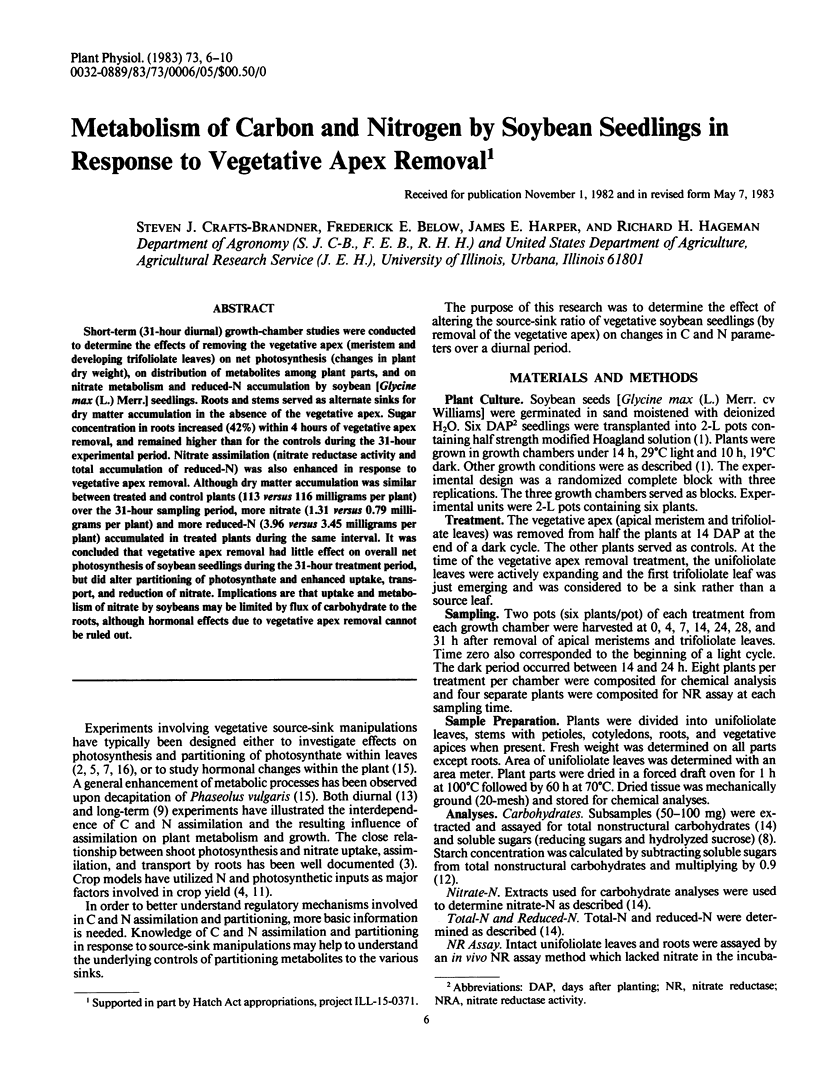
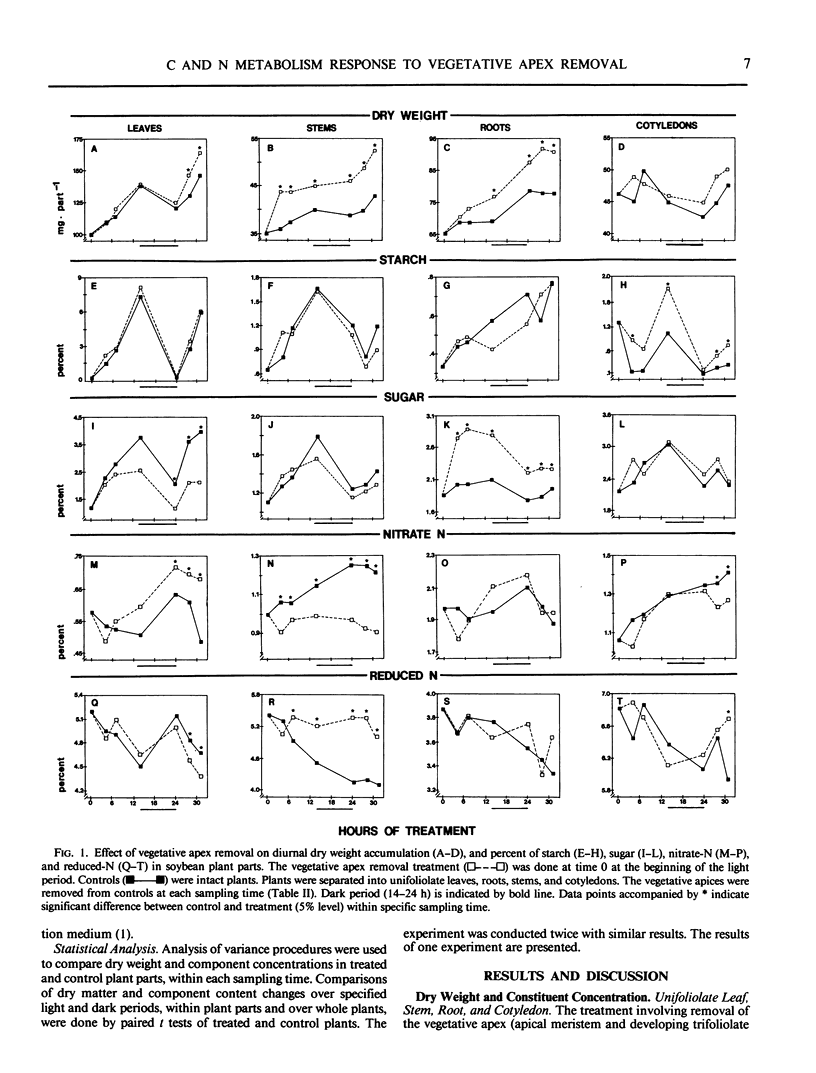
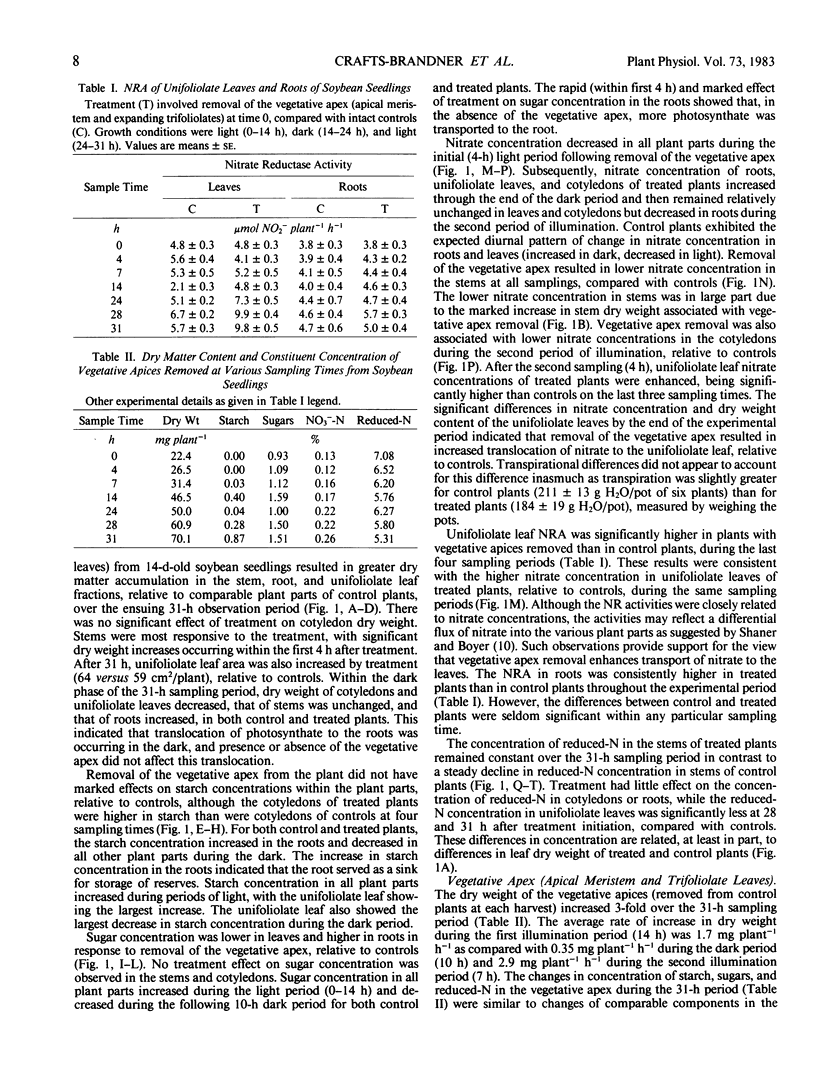
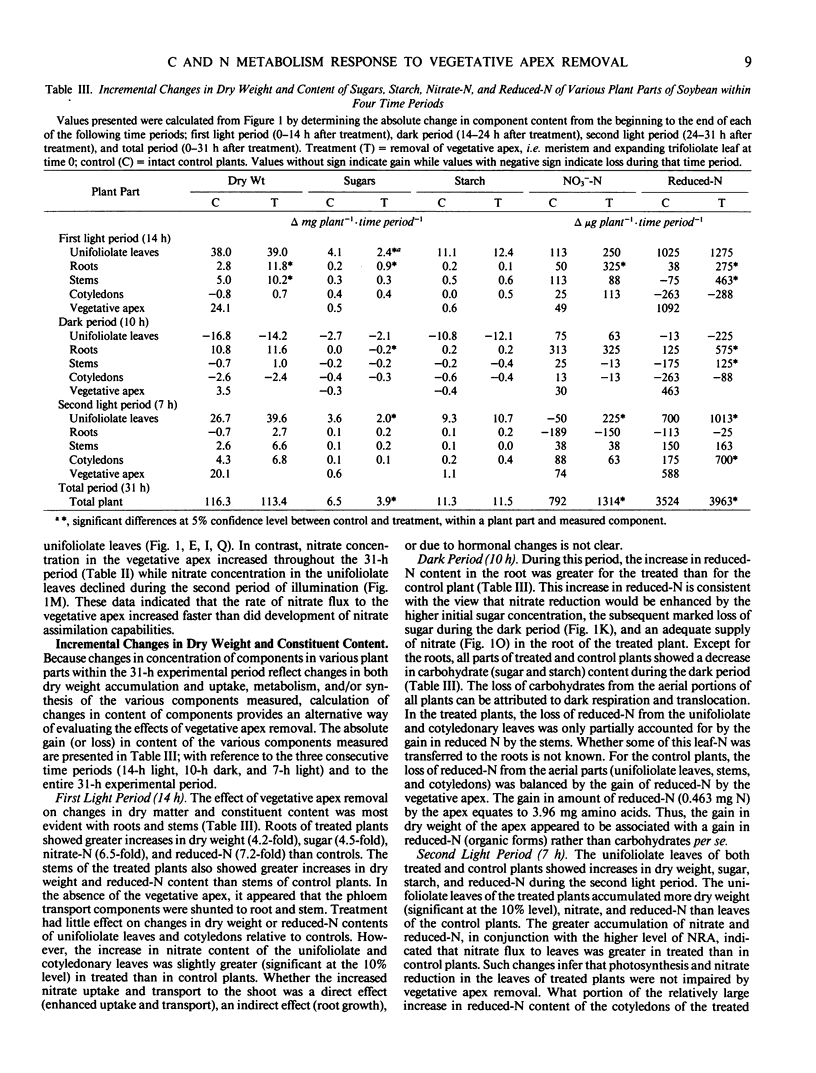
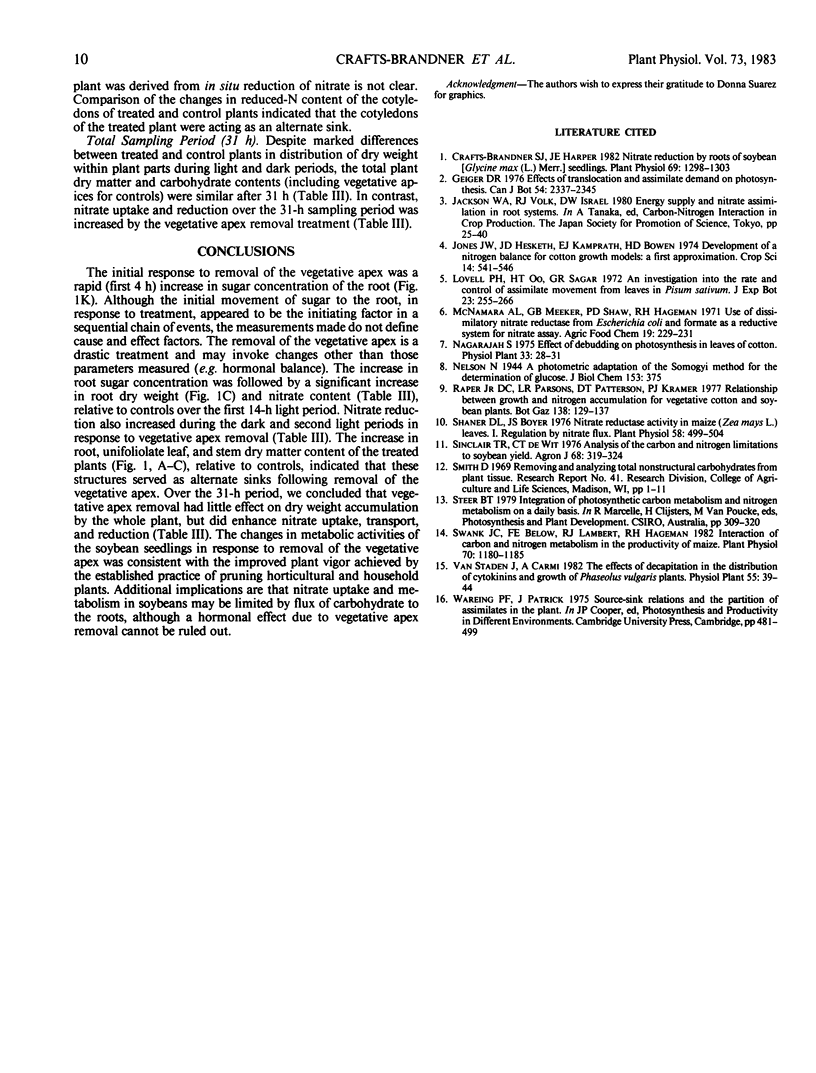
Selected References
These references are in PubMed. This may not be the complete list of references from this article.
- Crafts-Brandner S. J., Harper J. E. Nitrate Reduction by Roots of Soybean (Glycine max [L.] Merr.) Seedlings. Plant Physiol. 1982 Jun;69(6):1298–1303. doi: 10.1104/pp.69.6.1298. [DOI] [PMC free article] [PubMed] [Google Scholar]
- Shaner D. L., Boyer J. S. Nitrate Reductase Activity in Maize (Zea mays L.) Leaves: I. Regulation by Nitrate Flux. Plant Physiol. 1976 Oct;58(4):499–504. doi: 10.1104/pp.58.4.499. [DOI] [PMC free article] [PubMed] [Google Scholar]
- Swank J. C., Below F. E., Lambert R. J., Hageman R. H. Interaction of carbon and nitrogen metabolism in the productivity of maize. Plant Physiol. 1982 Oct;70(4):1185–1190. doi: 10.1104/pp.70.4.1185. [DOI] [PMC free article] [PubMed] [Google Scholar]


